Anemone blanda
Anemone blanda (“Grecian windflower” or “Balkan anemone”) may be an unpresuming little flower but it is far from being bland. As soon as the spring sun comes out in March and throughout April it makes for very pretty spots of color under the trees. I usually buy the Blue Shades mix and there are usually one or two white ones among them.
Some soak them before planting, I never did and it works out just fine. They like any old garden soil, as long as it’s not too heavy. Growing in the wild from the Balkans to Syria, they like to rest in a soil that gets pretty dry in summer when they draw back into the earth.
They should be left alone where they are as they tend to appear more and more generously after two or three years by re-seeding themselves. They make a wonderful springtime groundcover under trees.
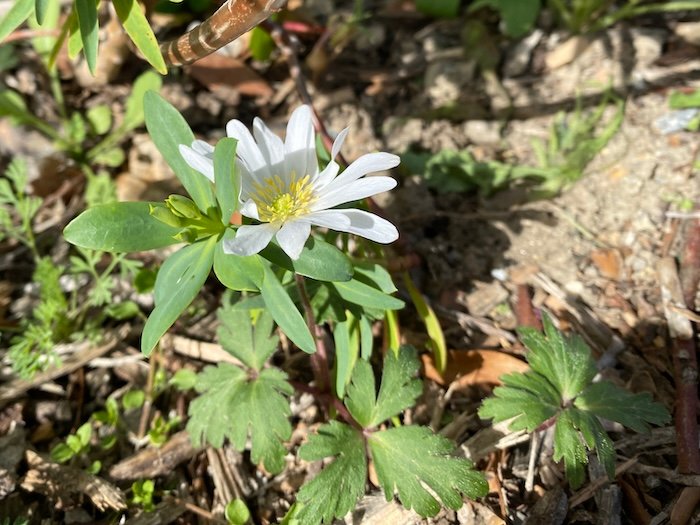

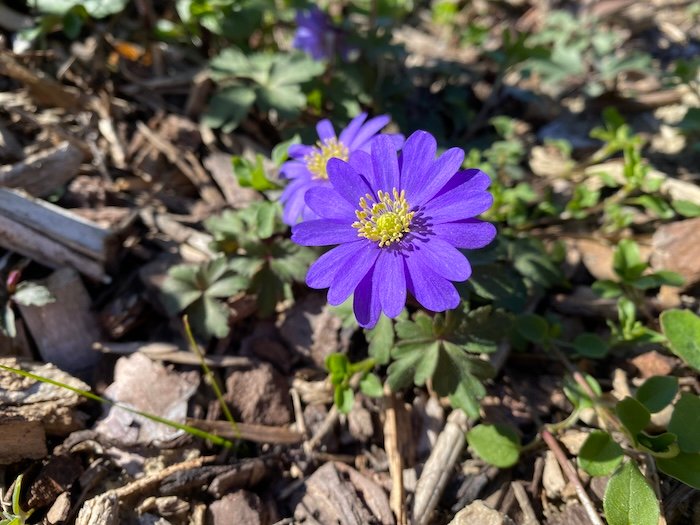
Anemone coronaria
If I like Anemone blanda a LOT, I absolutely LOVE Anemone coronaria with its sumptious velvety colors from February through April and even into May. I prefer the simple unfilled flowers of the “De Caën”mix, usually consisting of white, blue, purple, and red flowers.
“Poppy anemones” grow along the Mediterranean, in Southern Turkey, Syria, Iran, and on the Sinai Peninsula. They can take springtime heat, like any type of well-drained soil, and are hardy to -9.5℃ (zone 8b).
Here as well the advice is to soak the tubercules before planting and to turn them bumpy side up. I had not read that advice before mine and they worked out just fine.
As with all bulb plants, the spent flower stems should be cut, but the leaves left to dry up on their own at the end of spring. Crown anemones will reappear the following spring for several years and they may also self-seed which would make me very happy indeed.
Just as with Anemone blanda, I plant the coronarias under trees as well. In the spring they have the full sun they love and during the rest of the year, when they’re in repose, the shade won’t bother them.
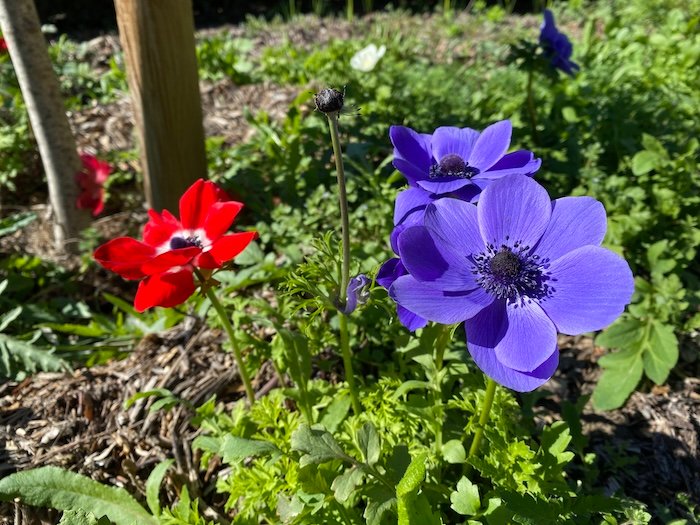

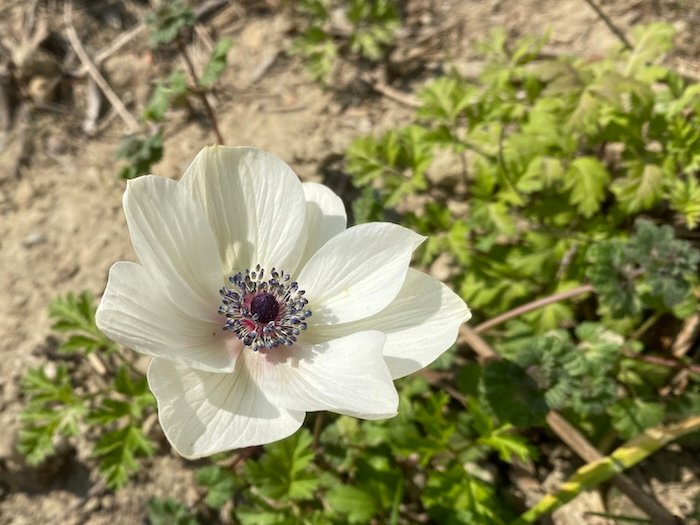
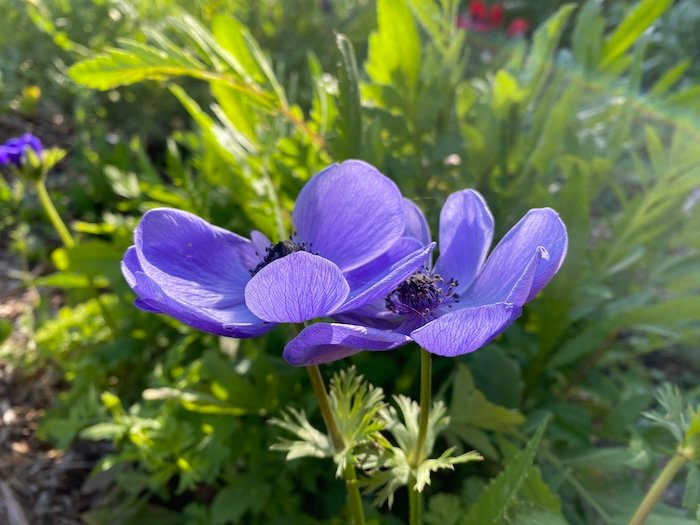
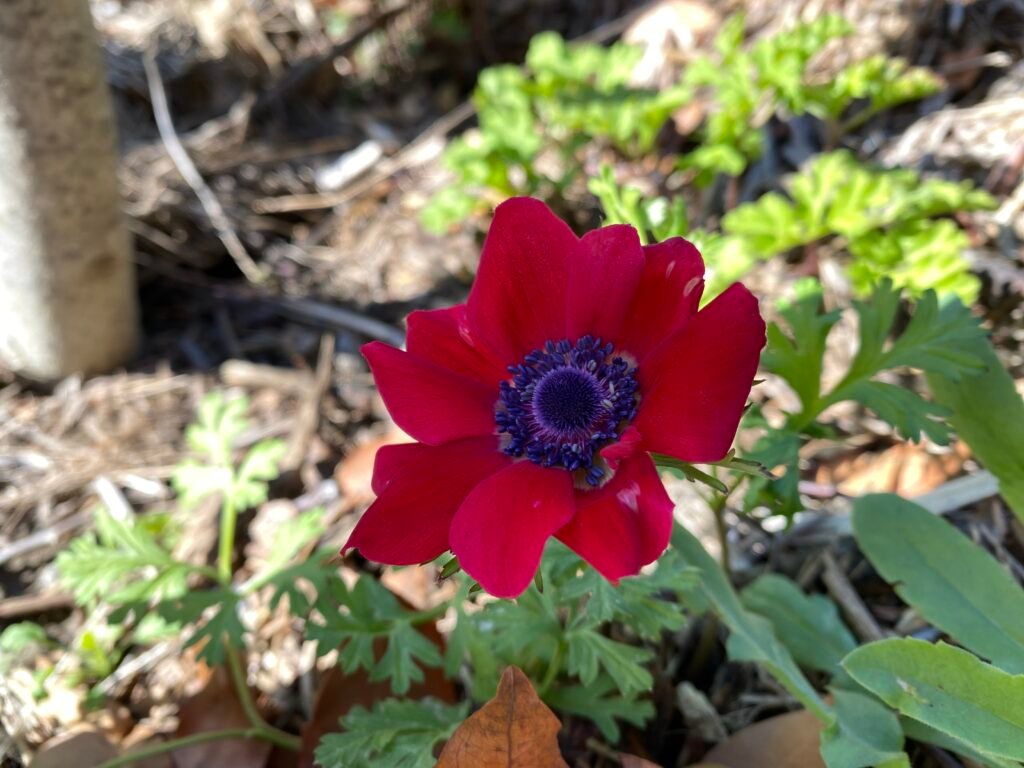
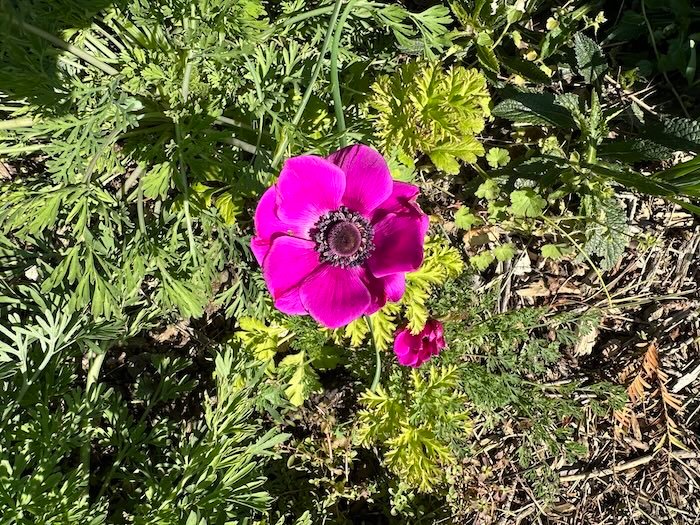
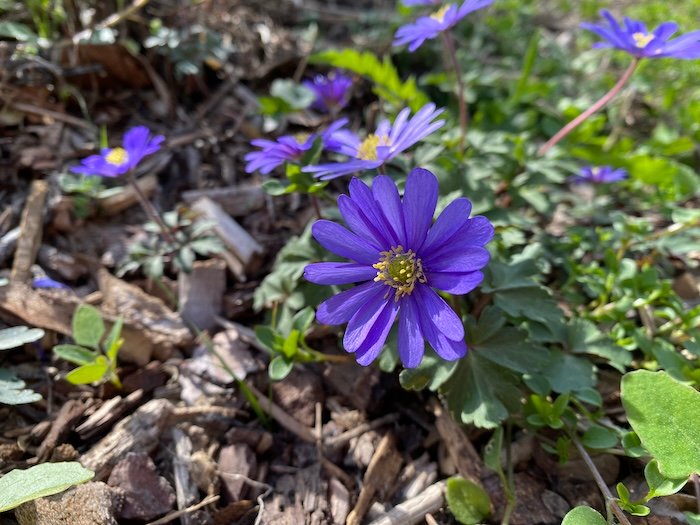
Leave a Reply